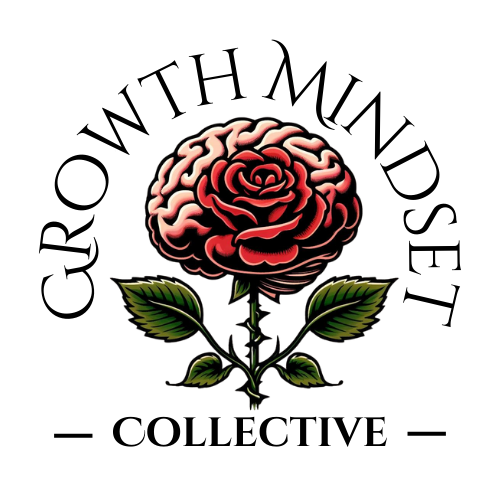Should I Homeschool My Child?
Should I Homeschool My Child?
Homeschooling, a personalized educational pathway, has sparked considerable interest among parents worldwide. With the educational landscape evolving, many find themselves pondering the suitability of homeschooling for their child's learning journey. This decision carries profound implications for both the child's development and the family's daily dynamics. In this article, you will learn about topics such as:
- Why Homeschool is trending.
- What’s wrong with the public school system?
- The reasons people are choosing to homeschool.
- The benefits and challenges of homeschooling.
- Key factors to consider before making a decision.
- Why to not homeschool your kids.
- What state will you be homeschooling in?
- Resources and strategies for successful homeschooling.
Embarking on the homeschooling journey requires careful consideration and planning. Let's explore what it entails, helping you make an informed decision that aligns with your child's best interests.
The Rising Trend of Homeschooling
In recent years, homeschooling has transformed from a niche educational choice to a widely recognized alternative, with millions of families worldwide opting out of traditional school systems. This shift isn't merely a reaction to global events such as the COVID-19 pandemic; it reflects deeper societal changes and a growing dissatisfaction with one-size-fits-all education models.
Homeschooling has seen exponential growth in the past decade, with researchers estimating that almost two million students in the United States are educated at home, accounting for over 3% of the school-aged population. This increase is partly due to more diverse families choosing to homeschool for various reasons, including religious beliefs, concerns over the school environment, and a desire for a tailored educational experience (Riley, 2020).
What’s wrong with the public school system?
Bullying and school shootings represent two of the most challenging and distressing phenomena in public schools, negatively influencing the educational environment and the overall well-being of students. Through the examination of recent research, we can better understand the impacts of these issues and the measures that can be taken to mitigate them.
Bullying in Public Schools
Bullying in schools is a pervasive problem that negatively affects victims' mental health, physical health, and academic achievement. Research indicates that victims of bullying experience symptoms of depression, anxiety, psychotic symptoms, ADHD symptoms, conduct problems, ASPD disorders, and even attempts at suicide. The impact of bullying extends to substance abuse, crime, and delinquency, underscoring the need for comprehensive approaches to tackle bullying at the school, classroom, and individual levels. Interventions such as CBT and parent training have been highlighted as effective measures (Veronica Veronica, 2022).
Additionally, bullying among schoolchildren is not only a contemporary issue but also a historically persistent one, though systematic efforts to study and address it did not begin until the early 1970s. The phenomenon has since garnered significant societal and research interest worldwide, leading to the development of school-based interventions aimed at reducing bullying and its negative effects (Lisa H. Rosen, Kathy Deornellas, & Shannon R. Scott, 2017).
School Shootings and Their Impact
School shootings are traumatic events that cause significant distress to students and disrupt the learning environment. The Trauma Sensitive Schools (TSS) model has been identified as a beneficial approach to creating safe and secure environments for children, supporting their well-being and facilitating recovery after such incidents (Ezgi Ildirim, 2022).
Moreover, research into youth responses to school shootings between 2014 and 2017 suggests that while most young people show resilience, a minority experience severe and chronic symptoms. The variation in recovery trajectories emphasizes the need for tailored interventions, taking into account individual differences in pre-trauma functioning and various peri-traumatic and post-traumatic factors (Áine Travers, Tracey McDonagh, & A. Elklit, 2018).
High Student-to-Teacher Ratios: A Barrier to Personalized Learning
Public schools are facing a significant challenge: burgeoning class sizes that make it increasingly difficult for students to receive the individualized attention crucial for their academic development. Studies suggest that the effectiveness of teaching and learning is compromised in overcrowded classrooms, as teachers struggle to manage larger groups and cater to each student's unique learning needs (Aggarwal, 2018; Fubile & Sawe, 2022).
This dynamic not only affects the quality of education but also the student-teacher relationship, essential for a nurturing and productive learning environment.
The Implications for Student Learning
With a higher number of students per teacher, individual students find it challenging to engage meaningfully with their educators, potentially leading to gaps in understanding and missed opportunities for growth. Research indicates a significant correlation between student-teacher ratios and student performance, with lower ratios often leading to better academic outcomes, particularly in subjects requiring intensive support like mathematics (Oluyinka et al., 2021). This issue is especially pertinent in public schools, where resources are limited, and teachers are stretched thin, trying to accommodate the needs of every student.
Motivations Behind Homeschooling
Several factors motivate families to choose homeschooling over traditional schooling options. For many, concerns about the educational environment, including issues of safety, bullying, and quality of education, are paramount. Others are motivated by the desire to provide religious or moral instruction, or to accommodate the unique needs of children, such as those identified as gifted or with special educational needs (Gaither, 2018; Jolly et al., 2013).
Educational Strategies and Resources
Homeschooling families employ a wide range of educational strategies and resources to facilitate learning. These include the use of prepared curricula, textbooks from local school districts, public libraries, technology applications, and consultation with instructional specialists. Additionally, homeschoolers often engage in greater networking with other homeschooling families, sharing resources and expertise to enhance their children's educational experiences (Hanna, 2012).
Academic and Social Outcomes
The impact of homeschooling on children's academic and social development is a topic of considerable interest. Research suggests that homeschooled children tend to perform as well as or better than their traditionally schooled peers on standardized tests. They also report higher levels of satisfaction with their educational experience and may be better prepared for college. Socially, while there are concerns about homeschoolers' opportunities for socialization, many families actively seek out social and extracurricular activities to ensure their children develop healthy social skills (Drenovsky & Cohen, 2012; Pazhwak, 2022).
Benefits of Homeschooling
- Tailored Learnin: Homeschooling allows for personalized education plans that cater to a child's specific needs, interests, and pace. This is particularly beneficial for gifted children or those with unique talents, providing a flexible curriculum that can adapt to their developmental stage and learning style (Purwaningsih & Fauziah, 2020).
- Improved Family Dynamics: Homeschooling can strengthen family bonds through increased time spent together and shared learning experiences. Parents have the opportunity to transmit their values more directly and participate actively in their children's education (McGraw, Bergen, & Schumm, 1993).
- Flexible Scheduling: The flexibility of homeschooling accommodates varied learning schedules and can facilitate more in-depth exploration of interests or subjects. It also allows for educational travel, hands-on learning experiences, and participation in special programs (Bodah, 2023).
Challenges of Homeschooling
The challenges include the substantial time and commitment required from parents, socialization concerns, and financial considerations. Addressing these challenges requires thoughtful planning, resourcefulness, and a strong support network.
- Parental Responsibility: Homeschooling places a significant burden on parents, who must not only provide a comprehensive education but also navigate the administrative aspects of homeschooling, including compliance with state regulations and preparing for college admission (Jolly, Matthews, & Nester, 2013).
- Socialization Concerns: One common concern about homeschooling is the potential for limited social interaction with peers. While homeschoolers can and do participate in extracurricular activities and homeschooling groups, finding and maintaining these social networks requires effort and resources (Cooper & Sureau, 2007).
- Academic and Financial Resources: Homeschooling requires access to educational materials and activities, which can impose financial burdens on families. Moreover, parents must feel competent to teach a broad curriculum or have the resources to outsource certain subjects to tutors or online courses (Rivero, 2021).
Key Factors to Consider
Before embarking on homeschooling, consider your child's learning style and needs, the legal requirements in your area, and your ability to commit time and resources. Careful consideration of these factors can help you make a well-informed decision.
How to Make the Decision
Making the decision involves evaluating your child's needs, discussing with other homeschooling families, and considering alternative education options. This process is deeply personal and requires introspection, research, and a clear understanding of the commitment involved.
Why to not Homeschool your Kids
- Limited Socialization Opportunities: Homeschooled children may have fewer opportunities to interact with peers in a diverse educational setting, potentially impacting their social skills development and understanding of societal norms. While homeschoolers can participate in extracurricular activities, the daily interaction found in traditional schools is less frequent, possibly leading to social isolation for some children (Neuman, 2020).
- Challenges in Educational Quality and Consistency: Parents may not always have the necessary skills or knowledge to cover all subject areas comprehensively, potentially leading to gaps in the child's education. Furthermore, the lack of standardized educational guidelines can result in inconsistent learning outcomes (Wen, 2023).
- Impact on Family Dynamics: Homeschooling can place significant stress on family dynamics, with parents needing to balance the roles of teacher and caregiver. This dual role can strain parent-child relationships and potentially impact the quality of education (Alpdoğan, Omak, & Eldeniz Çetin, 2023).
- Limited Access to Resources and Extracurricular Activities: Homeschooled students may have limited access to educational resources such as libraries, science labs, and sports facilities. Additionally, opportunities for extracurricular activities and specialized programs (e.g., advanced placement courses) are often more readily available in traditional school settings (Nicolson, 2021).
- Challenges with College Admission: While many colleges and universities have adapted their admission processes to accommodate homeschooled applicants, these students may face additional challenges in demonstrating the breadth and depth of their education, particularly in areas requiring standardized testing or specific coursework (Drenovsky & Cohen, 2012).
You Should NOT Homeschool Your Child if…
In the growing landscape of educational choices, homeschooling has emerged as a popular option for many families, drawn by the flexibility and personalized learning it can offer. However, homeschooling is not a one-size-fits-all solution, and there are significant factors every parent should consider before making the leap from public or private schooling to educating their children at home.
Time Commitment: More Than Just Lesson Hours
One of the most substantial commitments to homeschooling is time. It's not just about the hours spent in what we traditionally consider "school time." There's also the preparation of lessons, grading, and the inevitable questions that arise after hours. If your current schedule doesn't allow for 3 to 4 hours a day dedicated solely to the educational process, it may be time to reconsider. Organizing lessons, teaching, and evaluating work require a substantial amount of time, patience, and dedication.
Patience and Temperament: The Hallmarks of a Teacher
The temperament of the homeschooling parent is another critical factor. Teaching is an art that requires a great deal of patience and calmness. If you find it challenging to maintain composure or have difficulty managing stress, homeschooling might not be the best option. The role of a teacher—filled with moments of challenge, misunderstanding, and frustration—demands a level of emotional stability. Yelling or shaming, for instance, can harm your child's learning experience and self-esteem.
Financial Considerations: The Cost of Education at Home
Another vital consideration is your family's financial situation. Homeschooling often means having one parent stay at home, which might not be feasible for every family. Beyond just the cost of curricular materials, there are potential lost wages to consider. Before diving into homeschooling, it's crucial to evaluate whether your financial situation can support the shift in working dynamics.
You Can’t Meet Your Child's Needs
Each child is unique, with individual learning needs that must be carefully considered. Children with special educational needs or those who are exceptionally gifted might require resources, specialized teaching methods, or educational materials that go beyond what you can provide at home. Unless you have the expertise or the means to hire private teachers or tutors, homeschooling might not meet your child's educational requirements.
Homeschooling is a journey that requires a deep commitment and should not be embarked upon lightly. It demands not just a financial investment but a substantial allocation of time, emotional energy, and patience. For those who can meet these requirements, it can be an enriching and rewarding educational path. However, it's essential to approach this decision with a clear understanding of your own and your child's needs. If after careful consideration, you find that the demands of homeschooling are too great, remember that it's okay. The most important thing is to ensure your child receives the education that best suits their needs and your family's situation.
Resources and Strategies for Successful Homeschooling
As more families opt to homeschool their children, the availability of resources and support systems has also expanded, catering to the diverse needs of homeschooling families. This blog post delves into the current resources available to homeschool families, highlighting how these tools can help facilitate a more effective and enriching educational experience.
A Rich Tapestry of Resources
- Curricula and Textbooks: Homeschooling families have access to a wide range of prepared curricula, both religious and non-religious, allowing them to tailor the educational experience to their children's needs. The increase in the acquisition of textbooks from local school districts and the utilization of public libraries have also enriched the homeschooling resource pool (Hanna, 2012).
- Technology Integration: The integration of technology in homeschooling has opened new doors for learning, from online courses and educational apps to interactive software. This technological advancement has made education more accessible and flexible, catering to the individual pace and interests of each child (Carpenter & Gann, 2016).
- Networking and Collaboration: One of the strengths of the homeschooling community is its ability to network and collaborate. Families often pool resources, share expertise, and communicate with other homeschooling families, creating a supportive community that enhances the homeschooling experience (Hanna, 2012).
- Specialized Support: For families with children who have special needs or are gifted, homeschooling offers a personalized education plan that can better cater to their specific requirements. The flexibility of homeschooling allows for the adaptation of learning methods, pacing, and content to suit the individual learner's needs more closely (Jolly, Matthews, & Nester, 2013).
- Empowering Families Through HOME: The HOME acronym offers a framework for empowering home educators: Helping families find their fit, Offering a diversity of teaching resources, Making homeschooling socially acceptable, and Empowering homeschool partnerships. This approach encourages a collaborative effort in educating children, ensuring they receive the education they need, especially under global constraints like the COVID-19 pandemic (2020).
Differences in Homeschool Requirements Across States
The legal requirements for homeschooling differ significantly from state to state. Some states, like Washington, have detailed regulations and implementation processes that ensure a well-rounded education while allowing for considerable parental involvement and flexibility (E. T. Bodah, 2023). In contrast, other states offer more freedom but less guidance, which can be both a blessing and a challenge, depending on the family's needs.
Research Your State's Legal Requirements: Each state has its own set of laws governing homeschooling, from registration to curriculum approval and assessment protocols. Understanding these laws is the first step in ensuring a smooth homeschooling experience. States like Washington serve as excellent examples of structured yet flexible regulations that support homeschooling families (E. T. Bodah, 2023).
States with the Best Resources for Homeschooling
The availability of resources, community support, and flexibility in educational methods play a crucial role in determining the best states for homeschooling. Studies have shown that families often supplement home education with cooperative instructors, private tutors, online education, and part-time enrollment in brick-and-mortar schools. States that facilitate these diverse educational arrangements are often viewed favorably by homeschooling families (Albert Cheng & Daniel Hamlin, 2022). Additionally, states offering clear guidance on curriculum development, assessment methods, and resources for special needs education are highly valued for their support of homeschooling families.
States Notoriously Challenging for Homeschool Families
The challenge in some states comes from either stringent regulations, a lack of support resources, or both. These states may require detailed educational plans, regular assessments by certified teachers, or even curriculum approval by state education departments. The perceived hostility or indifference towards homeschooling in certain regions can also stem from a lack of understanding or support for this educational choice within the broader educational profession, making it more challenging for homeschool families to find resources and community support (C. Howell, 2013).
Conclusion
Choosing to homeschool your child is a significant decision, impacting not just their educational journey but also the dynamics of your family life. By carefully considering the benefits and challenges, utilizing a wealth of resources, and planning thoughtfully, you can ensure a fulfilling educational pathway for your child. If you're leaning towards homeschooling or simply wish to explore further, diving into a guide on creating an effective and engaging homeschool curriculum could be your next step.
References
- Riley, 2020: Discusses the exponential growth of homeschooling and the diverse reasons families choose this educational path.
- Veronica Veronica, 2022: Highlights the pervasive problem of bullying in schools and its negative impacts on victims, suggesting interventions like CBT and parent training.
- Lisa H. Rosen, Kathy Deornellas, & Shannon R. Scott, 2017: Addresses the historical and persistent issue of bullying in schools and the development of interventions.
- Ezgi Ildirim, 2022: Explores the Trauma Sensitive Schools (TSS) model as a response to school shootings.
- Áine Travers, Tracey McDonagh, & A. Elklit, 2018: Studies youth responses to school shootings and the need for tailored interventions.
- Aggarwal, 2018; Fubile & Sawe, 2022: Discusses the challenges of overcrowded classrooms and the impact on teaching effectiveness.
- Oluyinka et al., 2021: Links student-teacher ratios to student performance, emphasizing the need for lower ratios.
- Gaither, 2018; Jolly et al., 2013: Explains motivations behind homeschooling, including concerns over educational environment and a desire for personalized learning.
- Hanna, 2012: Talks about the resources and strategies employed by homeschooling families.
- Drenovsky & Cohen, 2012; Pazhwak, 2022: Examines the academic and social outcomes of homeschooled children.
- Purwaningsih & Fauziah, 2020: Discusses the benefits of tailored learning in homeschooling.
- McGraw, Bergen, & Schumm, 1993: Highlights how homeschooling can improve family dynamics.
- Bodah, 2023: Mentions the flexibility of homeschooling schedules.
- Cooper & Sureau, 2007: Addresses socialization concerns in homeschooling.
- Rivero, 2021: Talks about the financial considerations of homeschooling.
- Neuman, 2020: Points out the limited socialization opportunities for homeschooled children.
- Wen, 2023: Discusses challenges in educational quality and consistency in homeschooling.
- Alpdoğan, Omak, & Eldeniz Çetin, 2023: Notes the potential impact of homeschooling on family dynamics.
- Nicolson, 2021: Highlights challenges with access to resources and extracurricular activities for homeschooled students.
- Carpenter & Gann, 2016: Describes the integration of technology in homeschooling.
- Albert Cheng & Daniel Hamlin, 2022: Discusses states with the best resources for homeschooling.
- C. Howell, 2013: Identifies states that are challenging for homeschool families due to stringent regulations or lack of support.
About the Author
Coach Mark is the co-founder of Growth Mindset Collective, blending his deep passion for martial arts with a commitment to holistic education and empowering his own children. His journey in martial arts began in the 4th grade, following a challenging encounter with a bully. That pivotal moment led his dad to sign Mark up for karate lessons, setting Mark on a path toward resilience, discipline, and the cultivation of a growth mindset. Today, Mark is a proud black belt in jiu-jitsu, an honor awarded to him by five-time world champion Eduardo Rocha.
Alongside his wife, Sabrina, he leverages his rich martial arts background to inspire and empower his children and his students. Through their blog, Mark shares insights and guidance drawn from his personal journey, aiming to support others in their pursuit of personal growth, confidence, and empowerment.












